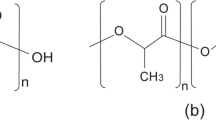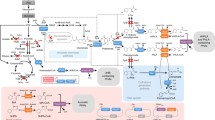Abstract
There has been a significant global interest to produce bulk chemicals from renewable resources using engineered microorganisms. Large research programs have been launched by academia and industry towards this goal. Particularly, C4 chemicals such as succinic acid (SA) and 1,4-butanediol have been leading the path towards the commercialization of biobased technology with the effort of replacing chemical production. Here we present O-Succinyl-l-homoserine (SH) as a new, potentially important platform biochemical and demonstrate its central role as an intermediate in the production of SA, homoserine lactone (HSL), γ-butyrolactone (GBL) and its derivatives, and 1,4-butanediol (BDO). This technology encompasses (1) the genetic manipulation of Escherichia coli to produce SH with high productivity, (2) hydrolysis into SA and homoserine (HS) or homoserine lactone hydrochloride, and (3) chemical conversion of either HS or homoserine lactone HCL (HSL·HCl) into drop-in chemicals in polymer industry. This production strategy with environmental benefits is discussed in the perspective of targeting of fermented product and a process direction compared to petroleum-based chemical conversion, which may reduce the overall manufacturing cost.




Similar content being viewed by others
References
Cheng K-K, Zhao X-B, Zeng J, Zhang JA (2012) Biotechnological production of succinic acid: current state and perspectives. Biofuels Bioprod Biorefin 6(3):302–318
Datsenko KA, Wanner BL (2000) One-step inactivation of chromosomal genes in Escherichia coli K-12 using PCR products. Proc Natl Acad Sci USA 97(12):6640–6645
Hong K-K, Nielsen J (2012) Metabolic engineering of Saccharomyces cerevisiae: a key cell factory platform for future biorefineries. Cell Mol Life Sci 69(16):2671–2690
Ju JY, Lee KH, Bae HA (2012) microorganism which produces l-amino acid and method for producing l-amino acid using the same. US Patent 20120252078 A1
Kumar D, Gomes J (2005) Methionine production by fermentation. Biotechnol Adv 23(1):41–61
Lee JH, Lee DE, Lee BU, Kim HS (2003) Global analyses of transcriptomes and proteomes of a parent strain and an l-threonine-overproducing mutant strain. J Bacteriol 185(18):5442–5451
Lerner CG, Inouye M (1990) Low copy number plasmids for regulated low-level expression of cloned genes in Escherichia coli with blue/white insert screening capability. Nucleic Acids Res 18(15):4631
Lin H, Bennett GN, San KY (2005) Metabolic engineering of aerobic succinate production systems in Escherichia coli to improve process productivity and achieve the maximum theoretical succinate yield. Metab Eng 7(2):116–127
Muska CF, Alles C (2005) Biobased 1,3-propanediol a new platform chemical for the 21st century. BioPerspectives 2005 BREW symposium. http://www.chem.uu.nl/brew/BREWsymposiumWiesbaden11-mei2005/WEBSITEBrewPresentations51105.PDF
Nagaraja KRR, Stephen T (2005) Method of synthesizing diketopiperazines. US Patent 6,967,202
Nakamura CE, Whited GM (2003) Metabolic engineering for the microbial production of 1,3-propanediol. Curr Opin Biotechnol 14(5):454–459
Park YH, Lee BC, Cho KM, Kim DC, Shin YU, Lee JH (2007) Escherichia coli can produce l-threonine and includes prokaryotic and eukaryotic microorganisms having an inactivated galR gene. US Patent 7,229,794 B2
Paul JD, George WH (2014) Biomass at the shale gas crossroads. Green Chem 16:382–383
Roe AJ, O’Byrne C, McLaggan D, Booth IR (2002) Inhibition of Escherichia coli growth by acetic acid: a problem with methionine biosynthesis and homocysteine toxicity. Microbiology 148(Pt7):2215–2222
Shin YU, Kim SY, Chang JS, Cho YW, Lee HJ, Heo IK, Na KH, Seo CI, Kim CH, Um HW (2010) Microorganism producing l-methionine precursor and the method of producing l-methionine precursor using the microorganism. US Patent 7,851,180
Shiue TW, Chen YH, Wu CM, Singh G, Chen HY, Hung CH, Liaw WF, Wang YM (2012) Nitric oxide turn-on fluorescent probe based on deamination of aromatic primary monoamines. Inorg Chem 51(9):5400–5408
US Department of Energy (2004) Top value added chemicals from biomass: volume I. http://www1.eere.energy.gov/biomass/pdfs/35523.pdf
Upare PP, Lee JM, Hwang YK, Hwang DW, Lee JH, Halligudi SB, Hwang JS, Chang JS (2011) Direct hydrocyclization of biomass-derived levulinic acid to 2-methyltetrahydrofuran over nanocomposite copper/silica catalysts. ChemSusChem 4(12):1749–1752
Vennestrøm PN, Osmundsen CM, Christensen CH, Taarning E (2011) Beyond petrochemicals: the renewable chemicals industry. Angew Chem Int Ed Engl 50(45):10502–10509
Yim H, Haselbeck R, Niu W, Pujol-Baxley C, Burgard A, Boldt J, Khandurina J, Trawick JD, Osterhout RE, Stephen R, Estadilla J, Teisan S, Schreyer HB, Andrae S, Yang TH, Lee SY, Burk MJ, Van Dien S (2011) Metabolic engineering of Escherichia coli for direct production of 1,4-butanediol. Nat Chem Biol 7(7):445–452
Author information
Authors and Affiliations
Corresponding author
Rights and permissions
About this article
Cite this article
Hong, KK., Kim, J.H., Yoon, J.H. et al. O-Succinyl-l-homoserine-based C4-chemical production: succinic acid, homoserine lactone, γ-butyrolactone, γ-butyrolactone derivatives, and 1,4-butanediol. J Ind Microbiol Biotechnol 41, 1517–1524 (2014). https://doi.org/10.1007/s10295-014-1499-z
Received:
Accepted:
Published:
Issue Date:
DOI: https://doi.org/10.1007/s10295-014-1499-z




